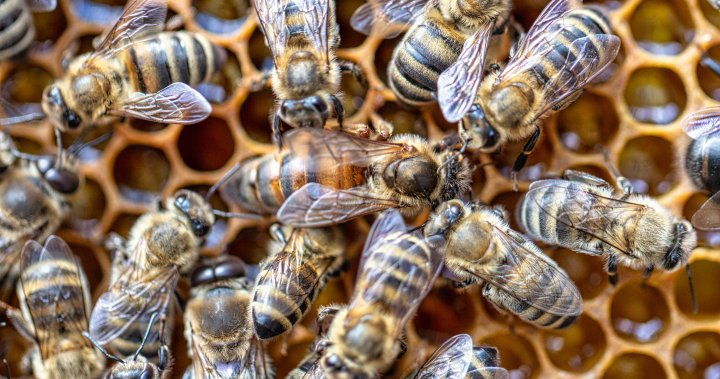Canadian beekeeper Rebecca Krowelski prefers Chilean queen bees for her hive due to their gentle nature and strong overwintering capabilities. However, the harsh Canadian winters often prove challenging for queen bees, leading to declining bee health and colony losses at an alarming rate. To combat this issue, many beekeepers, like Krowelski and Alberta beekeeper Jeremy Olthof, import queen bees from warmer countries such as Chile, New Zealand, Australia, and the southern United States. This practice has become increasingly common over the last few decades, with imported queens being a lifeline for Canadian beekeepers dealing with high colony losses.
While importing queen bees can help mitigate winter losses, Krowelski highlights the benefits of raising her own queens, which are acclimatized to Canadian winters and can be selected for specific traits and qualities. Commercial farmers, however, may prefer the efficiency of importing queens. The process of importing queen bees involves obtaining an import permit from the Canadian Food Inspection Agency (CFIA) and can be a bureaucratic challenge, but the numbers show a significant influx of foreign queen bees entering Canadian hives each year.
The decline in honey bee health in Canada is attributed to various factors, with varroa mites being a major threat to bee colonies. The Canadian Association of Professional Apiculturists (CAPA) reports high colony losses in recent years, resulting in an increased reliance on imported queen bees to establish new colonies and maintain bee populations. The risk of diseases and pests being brought in by imported queens is a concern, prompting pressure from government agencies for beekeepers to reduce their dependence on foreign queens.
Despite the risks associated with importing queen bees, beekeepers like Peter Dicks from Ontario continue to rely on foreign queens to help build up their colonies and counteract high winter losses. The process of introducing a foreign queen bee to a hive involves acclimating her slowly to the resident bees to ensure acceptance. While the immediate need for imported queens is crucial, researchers and beekeepers are working to find long-term solutions for sustainable beekeeping practices in Canada.
Efforts are being made in some provinces, such as Saskatchewan, to maintain a domestic supply of bees through programs like the Saskatraz Breeding Program. This initiative aims to produce queen bees locally at reasonable prices for commercial beekeepers, reducing the need for importing queen bees. Despite the challenges of raising bees in a cold climate, dedicated beekeepers like Krowelski remain committed to their love for these vital insects. The industry continues to navigate the delicate balance between importing foreign queens for immediate relief and developing sustainable practices to ensure the long-term health and resilience of Canadian bee populations.


